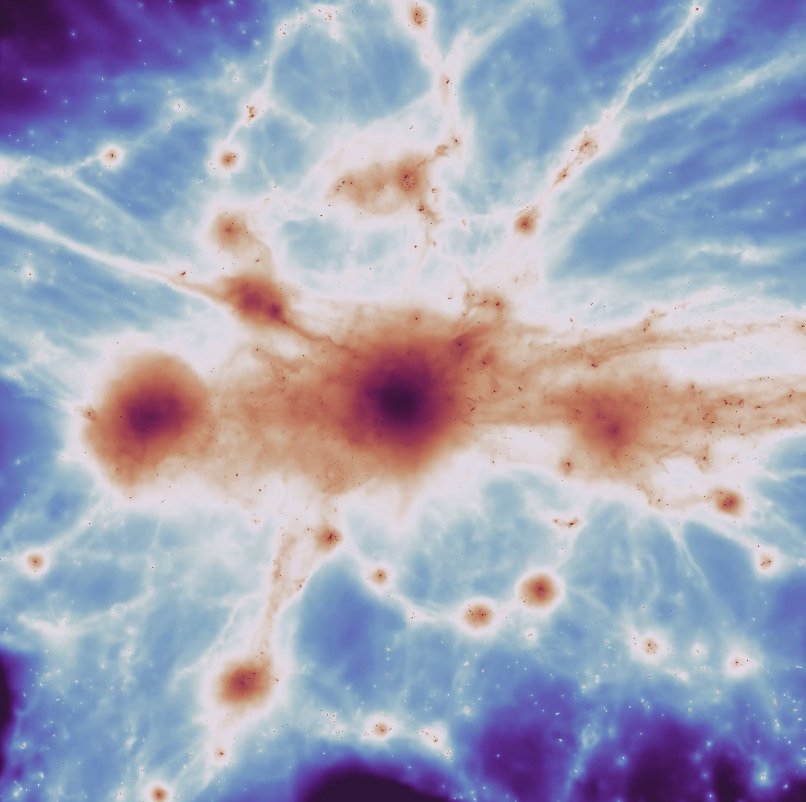An international group of scientists led by the RIKEN Cluster for Pioneering Research have used observations from the Multi Unit Spectroscopic Explorer (MUSE) at the ESO Very Large Telescope (VLT) in Chile and the Suprime-Cam at the Subaru telescope to make detailed observations of the filaments of gas connecting galaxies in a large, distant proto-cluster in the early Universe. Based on direct observations they found that, in accordance with the predictions of the cold dark matter model of galaxy formation, the filaments are extensive, extending over more than 1 million parsecs – a parsec being just over three light years – and are providing the fuel for intense formation of stars and the growth of super massive black holes within the proto-cluster.

The observations, which constitute a very detailed map of the filaments, were made on SSA22, a massive proto-cluster of galaxies located about 12 billion light years away in the constellation of Aquarius, making it a structure of the very early universe.
[ad_336]
The findings, published in Science, give new insights into galaxy formation. The dominant belief at one time was that galaxies formed and then organized into clusters, in a bottom-up way, but now it is generally believed that filaments in the universe fueled the formation of clusters of galaxies and galaxies at places where the filaments crossed, creating dense regions of matter. In accordance with this, the group found that the intersection between the enormous filaments they identified is home to active galactic nuclei – supermassive black holes – and “starbursting” galaxies that have very active star formation. They determine their location from observations made with the Atacama Large Millimeter/submillimeter Array (ALMA) and the W. M. Keck Observatory.
Their observations are based on the detection of what is known Lyman alpha radiation – ultraviolet light that is produced when neutral hydrogen gas is ionized and then returns to its ground state – using the MUSE instrument. The radiation was found to be intense – too high to be from the ultraviolet background radiation of the universe. Their calculations indicated that the high radiation was likely triggered by star-forming galaxies and forming black holes.
According to Hideki Umehata of the RIKEN Cluster for Pioneering Research and the University of Tokyo, the first author of the paper, “This suggests very strongly that gas falling along the filaments under the force of gravity triggers the formation of starbursting galaxies and supermassive black holes, giving the universe the structure that we see today.”
[rand_post]
“Previous observations,” he continues, “had shown that there emissions from blobs of gas extending beyond the galaxies, but now we have been able to clearly show that these filaments are extremely long, going even beyond the edge of the field that we viewed. This adds credence to the idea that these filaments are actually powering the intense activity that we see within the galaxies inside the filaments.”
Co-author Michele Fumagalli from Durham University, UK, said: “It is very exciting to clearly see for the first time multiple and extended filaments in the early universe. We finally have a way to map these structures directly, and to understand in detail their role in regulating the formation of supermassive black holes and galaxies.”